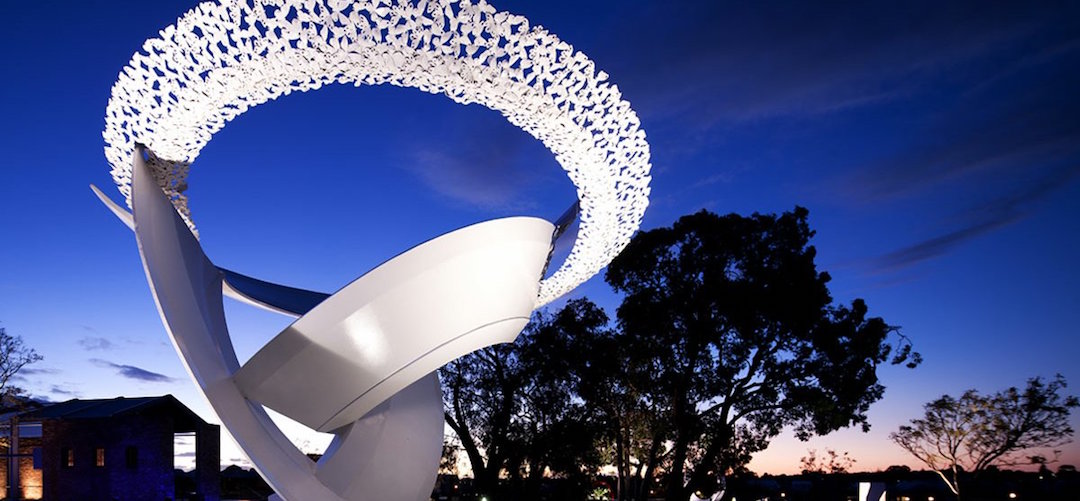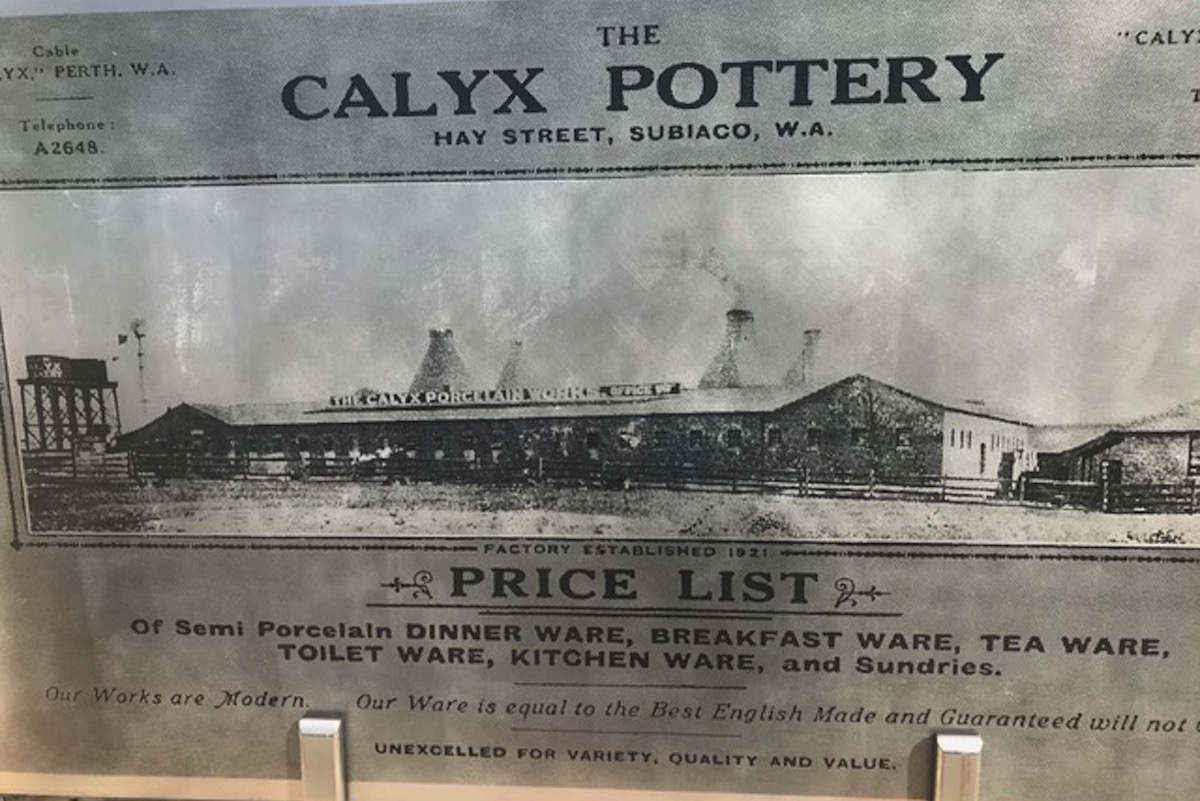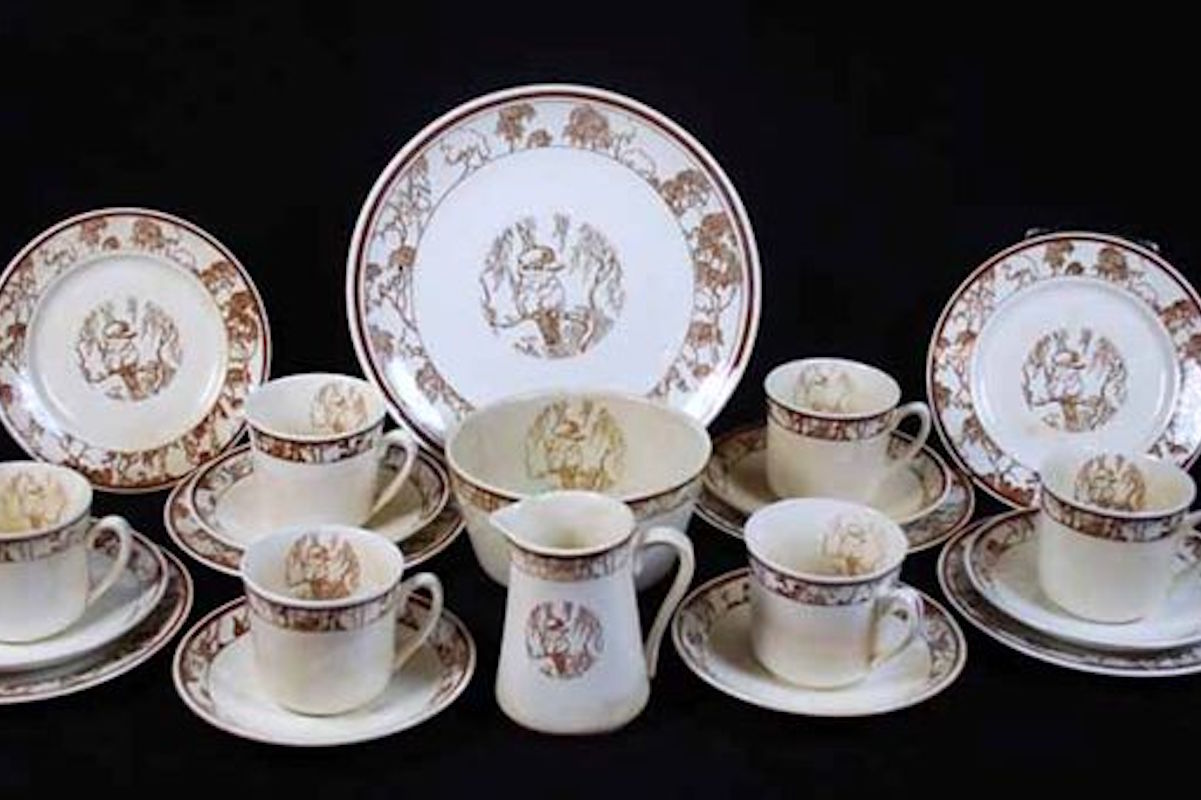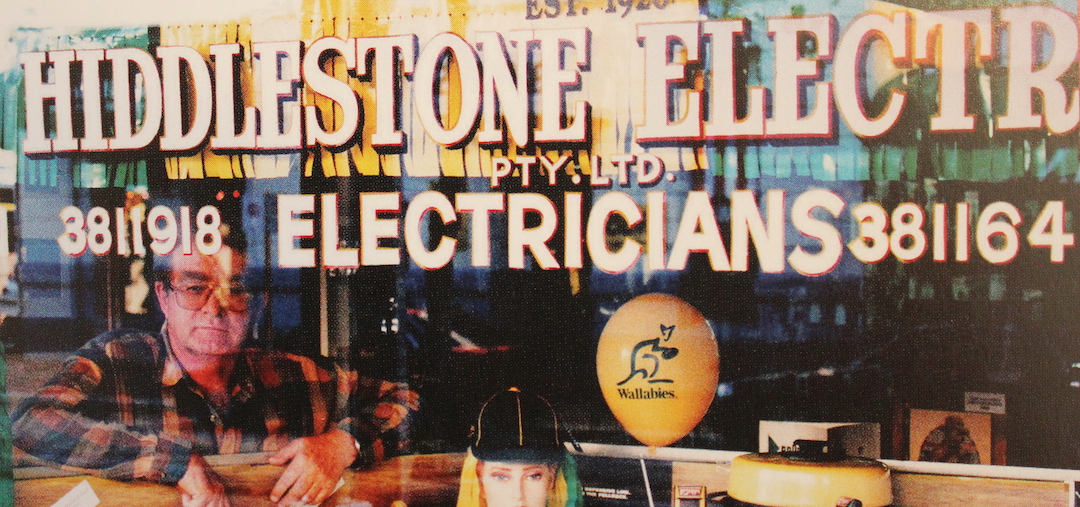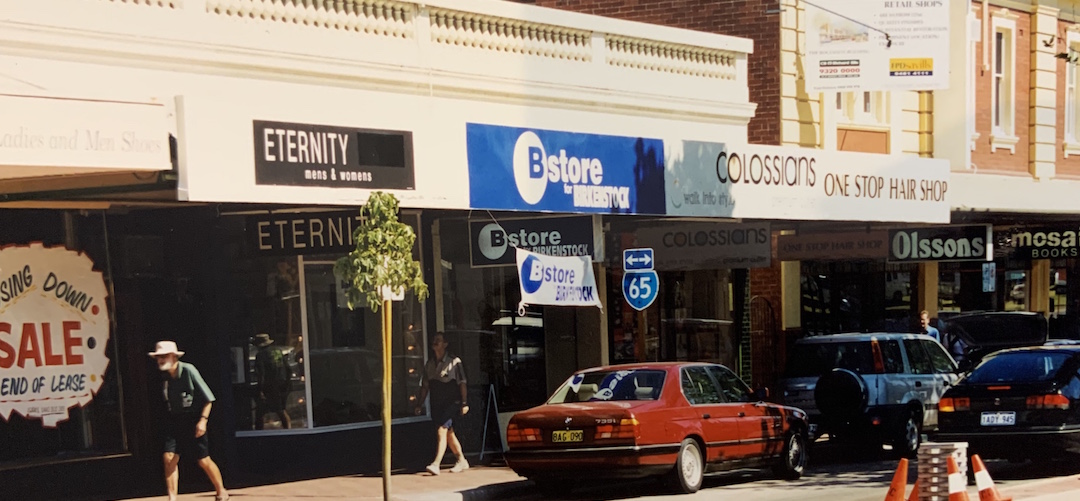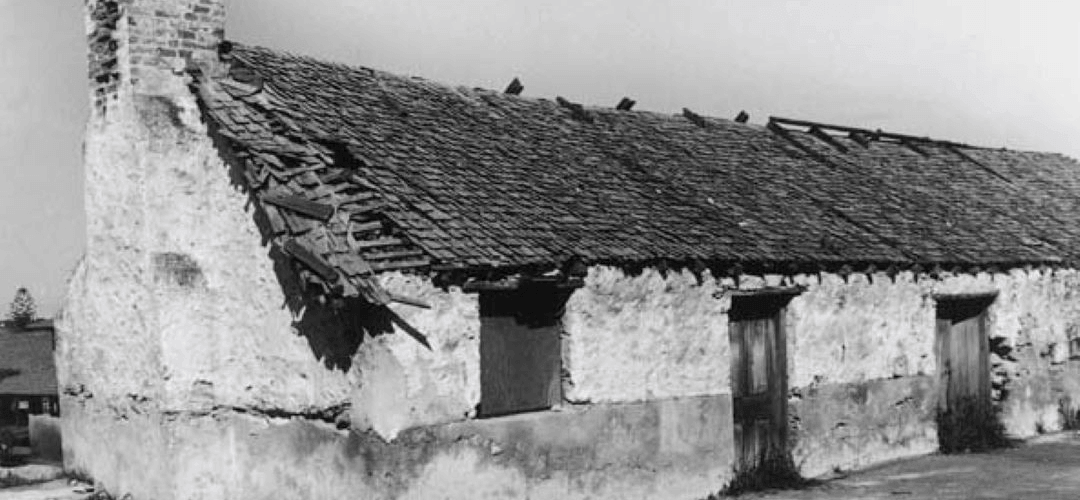The land at the western end of Roberts Road where it meets Hay Street was the site of one of Australia’s best known china ware manufacturers.
From 1921, when it opened as Calyx Porcelain and Paint Company, it went on to making specialty designs – Wembley Ware, Bristile, Australian Fine China, Franklin Mint, Redback Pottery, McGregor and Collections.
Calyx used raw materials from around the State – clay from Goomalling, Silica (or very fine white river sand) from Wanneroo, Felspar (or white rock) from Coolgardie and local Alumina, which was sent to Japan to be refined before returning to Perth in a usable form.
The bones for the ‘fine bone china’ came from Fremantle Abattoirs, by the truckload. Motifs were painted on by hand.
Over the Calyx period from 1921-1941 and in addition to the utilitarian wares, the factory produced fine and uniquely beautiful pieces that are highly valued, highly collectable and highly priced today. In fact, all Calyx Ware is desirable to the collector or investor.
The company struggled during the war years and HL Brisbane and Wunderlich Ltd (co-owned by Sir Lance Brisbane) first leased, then purchased the Calyx Porcelain Works in 1945, changing the name of the Subiaco based porcelain division to Bristile China.
Between 1945 and 1950 the factory underwent modernisation and expansion and by 1953 was in full production. At a time of recovery from WW2, a buoyant economy and happy consumers, a new product line was introduced.
This ‘Fancy Ware Range’, called Wembley Ware, became “Australia’s largest range of commercially-produced ceramics” in the 1950s. Wembley Ware was produced from 1946 to 1961 and was sold nationally and in New Zealand.
1992 saw ownership of the parent company Bristile Ltd changed to Futuris Ltd and a change of name to ‘Australian Fine China’.
However, despite their 99-year lease not being due to expire until 2020, time was running out for this iconic Western Australian ceramic production site and in 2006, after 85 years, it was all over.
The kilns and factories were demolished in 2006, making way for new residential and commercial buildings.
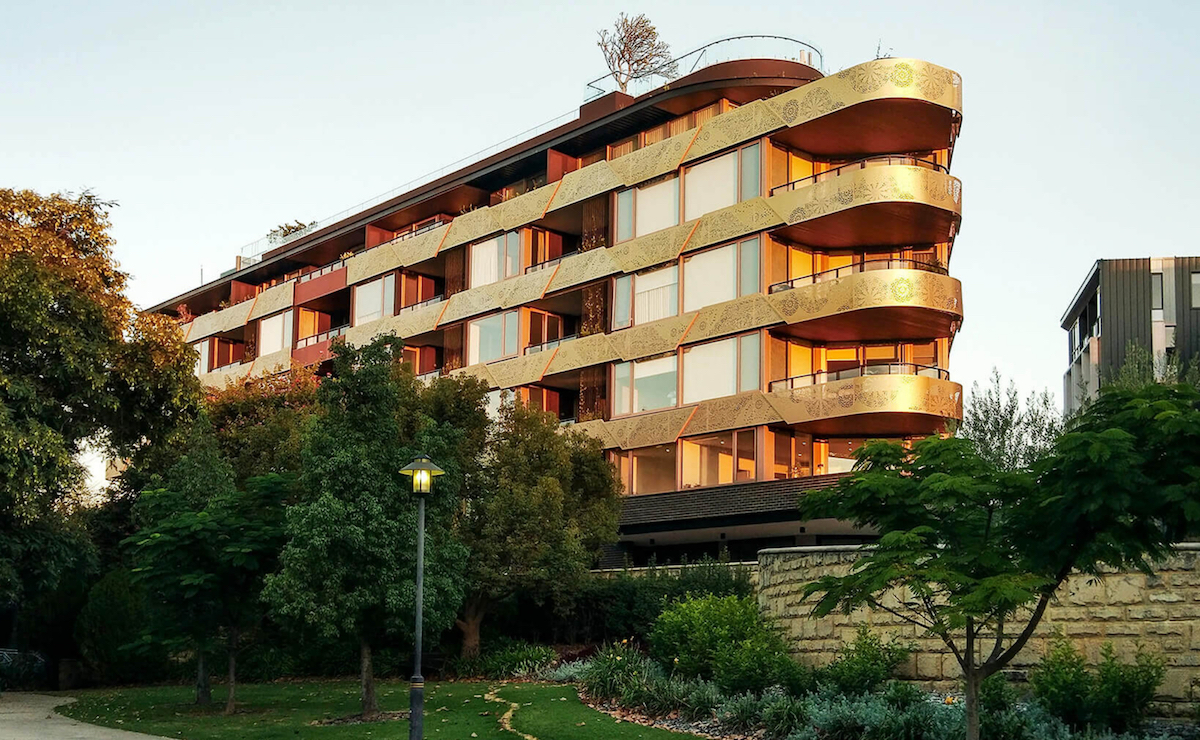
Orchard Terrace Apartments
Now known as China Green, the site incorporates small cluster developments – Indigo Rise, Viridian, Botanical, Orchard Terrace Subiaco, and Element 27, each with their own facilities. It borders Subiaco Common, a very attractive lake park and amenity for residents.
There are many mementos and tributes to the area’s origins in sculptures representing China plates and other factory aspects, information plaques, and framed, glass-covered old photos of the factory and processing areas. These are dotted around the precinct and make a nice trail ending at the Common.
Ironically, Australian Fine China is now made in China.
Sources: Talk about Subi newsletter, City of Subiaco, Issue 3, 2001; Archives File, Wembley Ware Society (founded in 2010)
Images: Archives File, Wembley Ware Society (founded in 2010)

